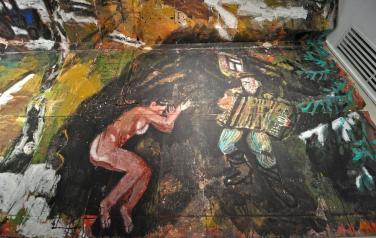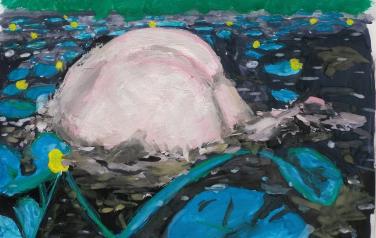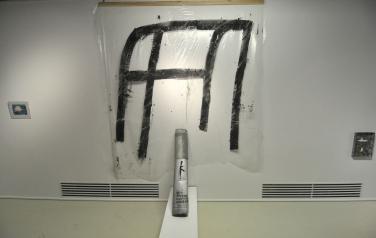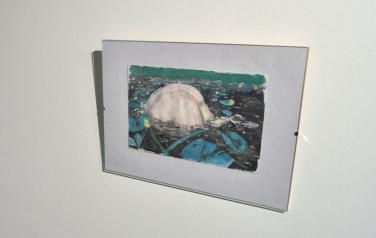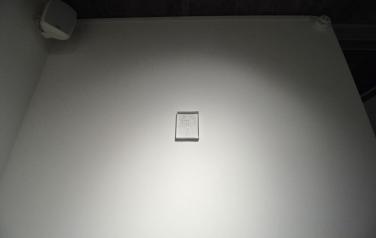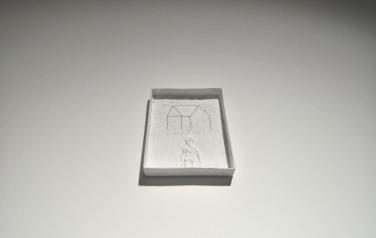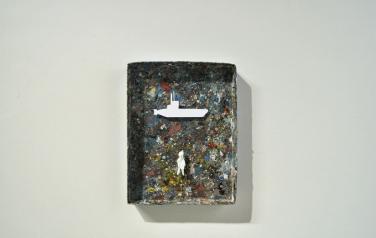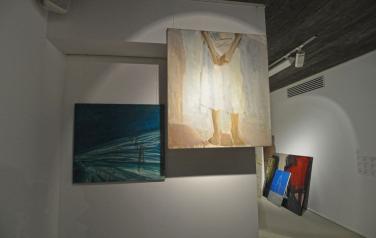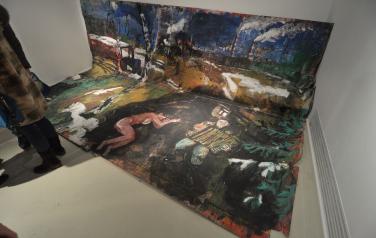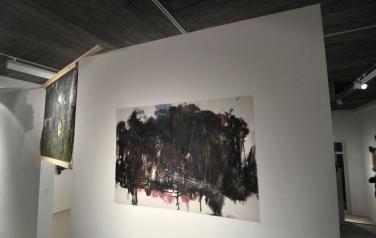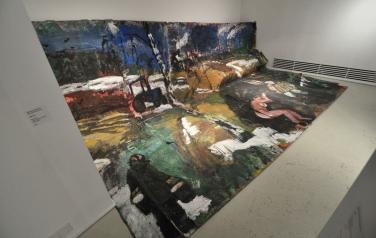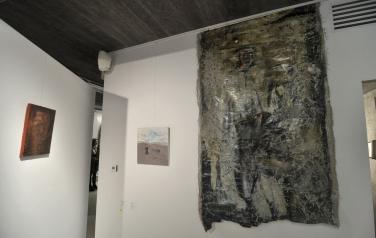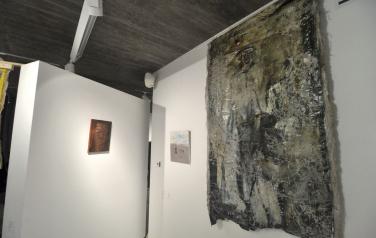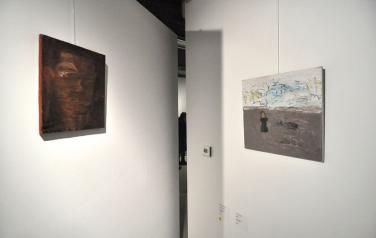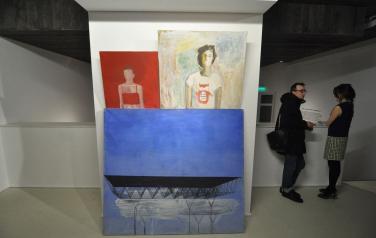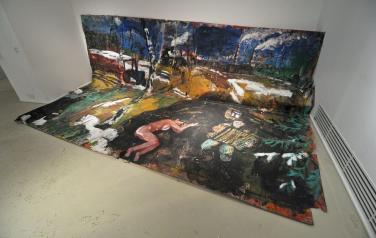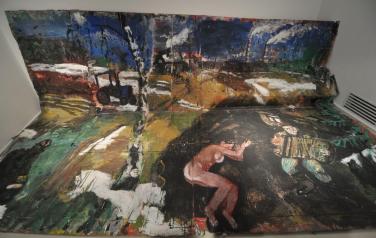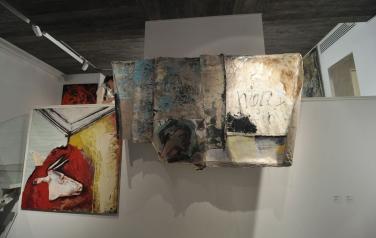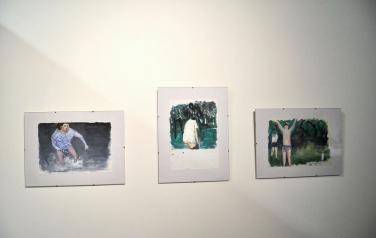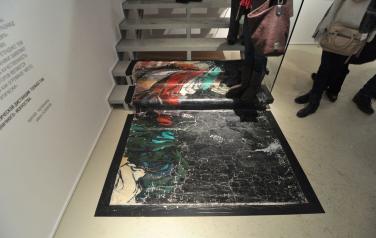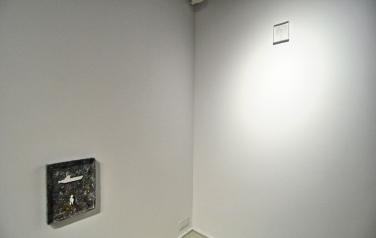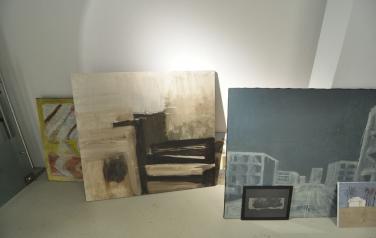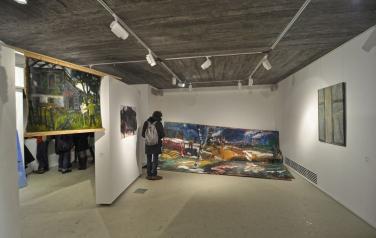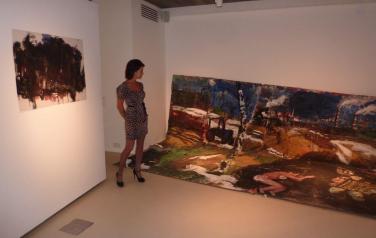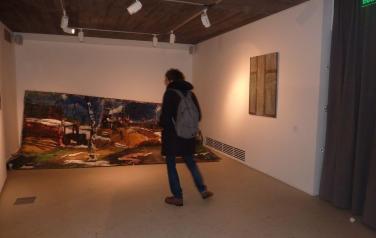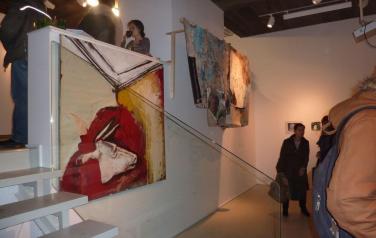Participants:
- Aleksandr Biryulin
- Dmitry Volodin
- Yulia Gamolskaya
- Dmitry Zhiltsov
- Egor Plotnikov
- Ilya Romanov
- Tatiana Chursina
Curators: Maria Kalinina, Ivan Novikov
Opening on the 2nd of March, at the main premises of “Agency. Art Ru”, is the exhibition “- Sorry, do you mind if I try next time?” The works of the young artists – Aleksandr Biryulin, Dmitry Volodin, Dmitry Zhiltsov and others – are an attempt to understand the logic of contemporary art that defines the concepts “bad-good”, “high quality-low quality” in relation to a work of art.
Why is it, today, that “bad” art can become “good”, and how can one exist within such a system? In search of an answer, the young artists, in spite of the difference in their creative interests, have set themselves the same task – to destroy “the masterpiece” as an idea. Their works, created with this aim, transgress the customary for them (and in many ways for us) conventions of the art system and claim to be genuinely avant-garde.
The aesthetics of “poor” art, which at one time in the past became a revelation in Italy and appeared in Russia not long ago, has always been relevant. The reason is the eternal poverty of artists. However, the scarcity of materials and resources has not always been recognised as something valuable. Most often this factor is considered as a negative quality. “Made out of bad materials – means it is bad art” – often because that is how the artist thinks. But if you try to ignore the artist’s opinion, it turns out that namely that “trash” object – is, in fact, the best work of art.
“Bad” is “good”. Is this the logic of contemporary art? The more negligible the object, the more valuable it is in the current system of relations. Moreover, we can say that only the “low-quality” of an artwork gives it the opportunity to achieve critical distance. There are countless examples of this. “Arte Povera” – is only the most striking. The works of the New York artists: Dash Snow and Dan Colen show the great strength of today’s discourse on the “bad”. The only contemporary art practice which helps avoid getting stuck in retrograde systems of art – is to create deliberately bad art. And, understandably, the criterion, used to judge the object as extremely “bad”, makes the work become “beautiful” and occupy a critical position in this system of meanings. But how is it possible to understand such an inverse system with detachment? How should one do something bad, so that it becomes good, so that it becomes bad, so that it becomes good?
The works of young artists, such as Aleksandr Biryulin, Dmitry Volodin, Dmitry Zhiltsov and others, are an attempt to answer this question. These artists, in spite of the difference in their interests, have, at times, set themselves the same task – to destroy “the masterpiece” as an idea. Their works, created with this aim, transgress the customary for them (and in many ways for us) conventions of the art system and claim to be genuinely avant-garde and, interestingly, the avant-garde in the full sense of the word, which rejects itself and destroys the paradigm of the art object. The artists declare the negligibility of the works created by them, and absolve themselves of the responsibility for the final product. Perhaps it is namely these intentions of the young artists that are decisive for the situation in Russian art, as were the works of Schwitters, Jorn, Emin in their day.
Ivan Novikov/Maria Kalinina
